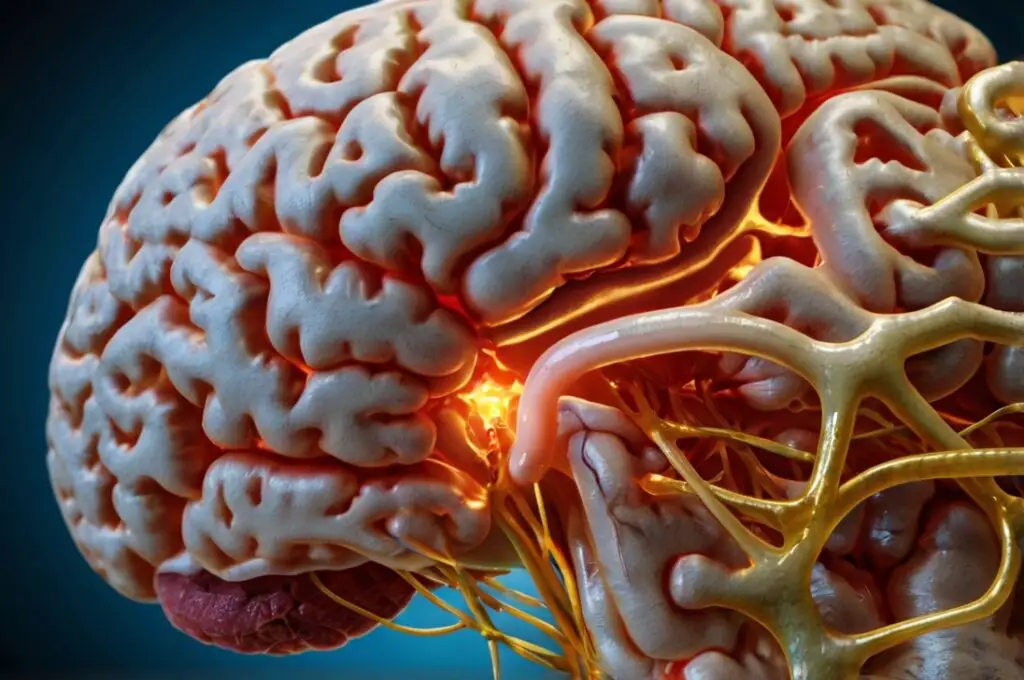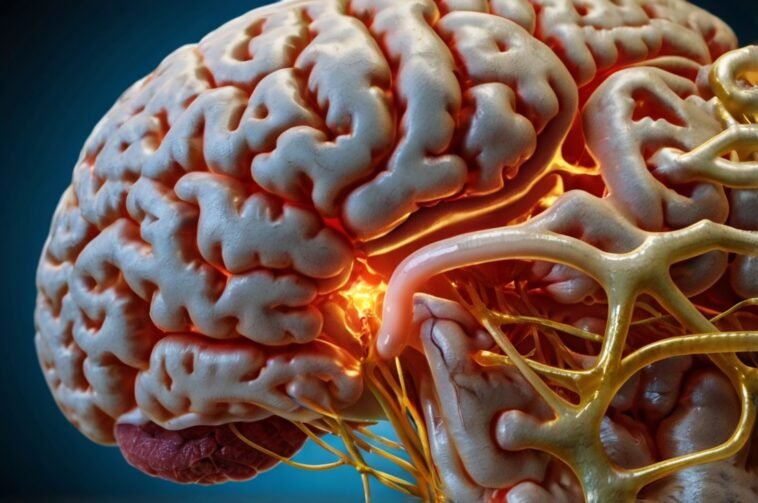
When we think about the brain and how it functions, we often hear about neurotransmitters—the chemicals that transmit signals across the synapses between neurons.
One of the most important neurotransmitters in the brain is glutamate.
Though it might not have the same name recognition as serotonin or dopamine, glutamate plays a crucial role in almost every aspect of brain function, from learning and memory to movement and cognition.
In this article, we’ll explore what glutamate is, its role in the brain, how it interacts with different receptors, and its connection to various brain disorders.
What is Glutamate?
Glutamate is an amino acid that serves as a neurotransmitter in the brain.
It is the most abundant excitatory neurotransmitter in the human nervous system, meaning it plays a key role in exciting neurons, making them more likely to fire signals.
This excitation is vital for a wide range of brain functions, including learning, memory, and overall cognitive processing.
Unlike some other neurotransmitters, glutamate is not something we get from our diet—it’s synthesized by the brain itself.
Despite its importance, too much glutamate can be harmful.
In the right amounts, glutamate facilitates communication between nerve cells.
However, excessive glutamate can lead to overstimulation of neurons, which can cause cell damage or even cell death.
This delicate balance is what makes glutamate so essential yet so potentially dangerous.

The Role of Glutamate in the Brain
Glutamate is involved in numerous critical functions of the brain.
Let’s dive into some of the key roles it plays:
Excitation
Glutamate is the brain’s primary excitatory neurotransmitter, meaning it plays a crucial role in sending messages between nerve cells.
When glutamate binds to its receptors on a neuron, it makes the neuron more likely to fire an action potential—essentially an electrical signal that travels through the nervous system.
This process is essential for communication between neurons.
Without glutamate, our brain cells would struggle to communicate, making it difficult for us to think, move, or even breathe.
Learning and memory
Glutamate is deeply involved in learning and memory through a process called synaptic plasticity.
This refers to the brain’s ability to strengthen or weaken connections between neurons in response to activity.
When we learn something new or form a memory, the connections between neurons are reinforced, and glutamate plays a key role in this process.
The NMDA receptor, a specific type of glutamate receptor, is particularly important for this kind of plasticity.
Without enough glutamate activity, these receptors wouldn’t function properly, leading to difficulties in learning and memory.
Cognition
Glutamate is also vital for higher-level cognitive functions such as decision-making, problem-solving, and planning.
These complex mental tasks rely on the proper functioning of glutamate in the brain.
For example, research has shown that lower levels of glutamate in the prefrontal cortex, an area involved in executive functions, are linked to poorer cognitive performance in tasks requiring working memory and decision-making.
Motor control
In addition to its role in cognition, glutamate is crucial for motor control, which is the brain’s ability to manage our muscles and movements.
In the motor cortex, which plans and controls movement, glutamate interacts with various receptors to help coordinate these signals.
If glutamate signaling is disrupted, it can lead to movement disorders like Parkinson’s disease and Huntington’s disease, where the control of motor activity is compromised.

Glutamate Receptors
Glutamate exerts its effects in the brain by binding to specific receptors on neurons.
There are three main types of glutamate receptors:
NMDA receptors
NMDA receptors are crucial for processes like learning and memory.
They’re unique because they don’t just open up when glutamate binds to them; they also need the neuron to be slightly depolarized (a small positive charge) to become active.
This makes NMDA receptors finely tuned to detect when two signals occur at the same time—a feature that’s essential for synaptic plasticity, the process by which the connections between neurons strengthen in response to activity.
This “coincidence detection” is what allows us to form and store memories.
AMPA receptors
AMPA receptors handle most of the brain’s fast excitatory signaling.
When glutamate binds to these receptors, they quickly open up and allow ions to flow into the neuron.
This flow of ions creates an excitatory post-synaptic potential, which essentially means the neuron is getting ready to fire an action potential and pass on the signal.
Because of their quick response, AMPA receptors are critical for rapid communication between neurons, helping us react to stimuli and process information quickly.
Kainate receptors
Kainate receptors are a bit more mysterious compared to NMDA and AMPA receptors.
While they’re involved in excitatory neurotransmission, their exact role isn’t as well understood.
Researchers believe that they help in modulating synaptic strength, meaning they might fine-tune how strong or weak the communication between neurons is.
This modulation is important for the brain’s overall flexibility and adaptability.
Each type of receptor has a unique role in how neurons communicate and respond to signals, highlighting the complexity of glutamate signaling in the brain.

Glutamate and Brain Disorders
Given its extensive role in brain function, it’s not surprising that glutamate is implicated in a number of neurological and psychiatric disorders.
When glutamate signaling goes awry, it can lead to a range of problems.
Alzheimer’s disease
In Alzheimer’s disease, one of the issues is excessive glutamate activity, which can lead to something called excitotoxicity.
This means that too much glutamate causes neurons to become overly excited, eventually leading to damage or death of these cells.
This contributes to the memory loss and cognitive decline that characterize Alzheimer’s.
Epilepsy
Epilepsy is a disorder characterized by recurrent seizures, which happen because of abnormal electrical activity in the brain.
One of the key factors in epilepsy is an imbalance between excitatory signals (like those from glutamate) and inhibitory signals, which normally keep the brain’s activity in check.
When there’s too much excitatory activity, it can lead to uncontrolled neuronal firing, resulting in seizures.
Schizophrenia
Schizophrenia is a complex psychiatric disorder that affects how a person thinks, feels, and behaves.
Recent research suggests that problems with glutamate signaling might be part of what causes schizophrenia.
Specifically, reduced glutamate activity could be linked to some of the cognitive symptoms of the disorder, such as difficulties with memory, attention, and problem-solving
Amyotrophic Lateral Sclerosis (ALS)
ALS, also known as Lou Gehrig’s disease, is a progressive neurodegenerative condition that affects motor neurons, the cells responsible for controlling muscles.
One of the factors contributing to the degeneration of these neurons in ALS is glutamate toxicity.
In this condition, excessive glutamate leads to the overstimulation and eventual death of motor neurons, which results in muscle weakness, paralysis, and eventually, respiratory failure.

The Takeaway
Glutamate is a fundamental neurotransmitter in the brain, playing a key role in everything from basic neuronal communication to complex cognitive functions.
Its involvement in both normal brain function and various disorders underscores the importance of maintaining a delicate balance in glutamate signaling.
As research continues, we may uncover more about how to harness glutamate’s power for therapeutic purposes while avoiding its potential pitfalls.



